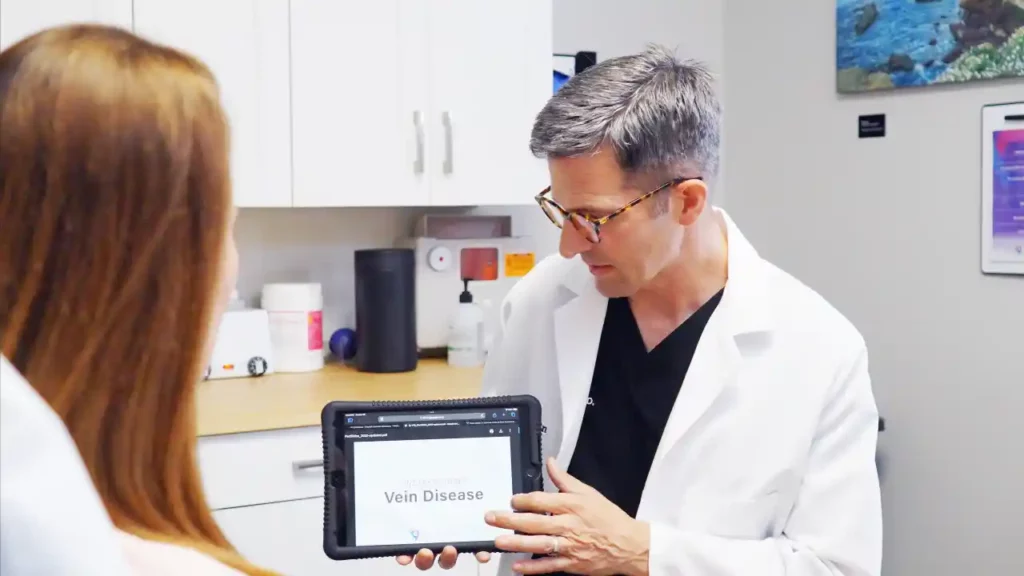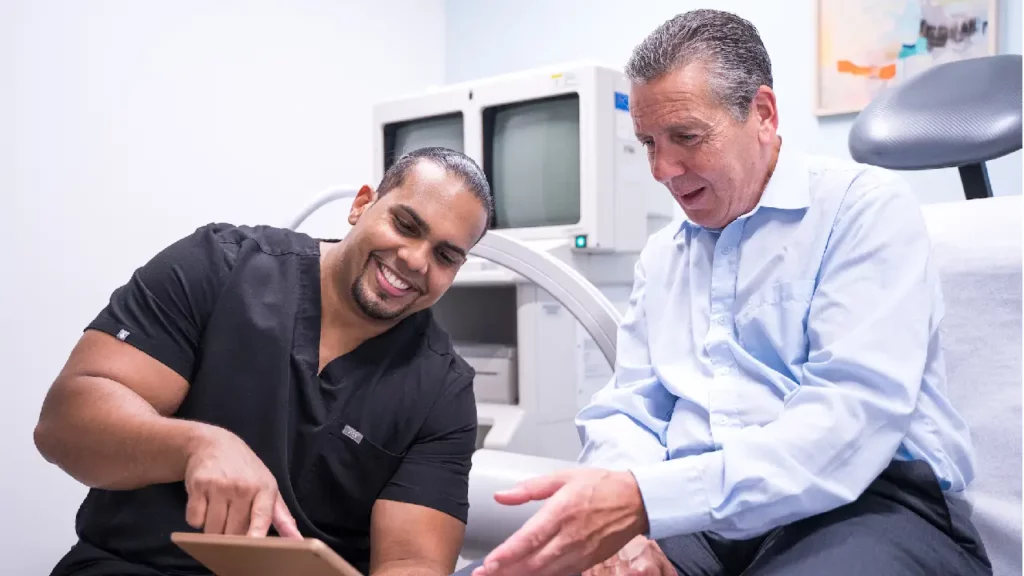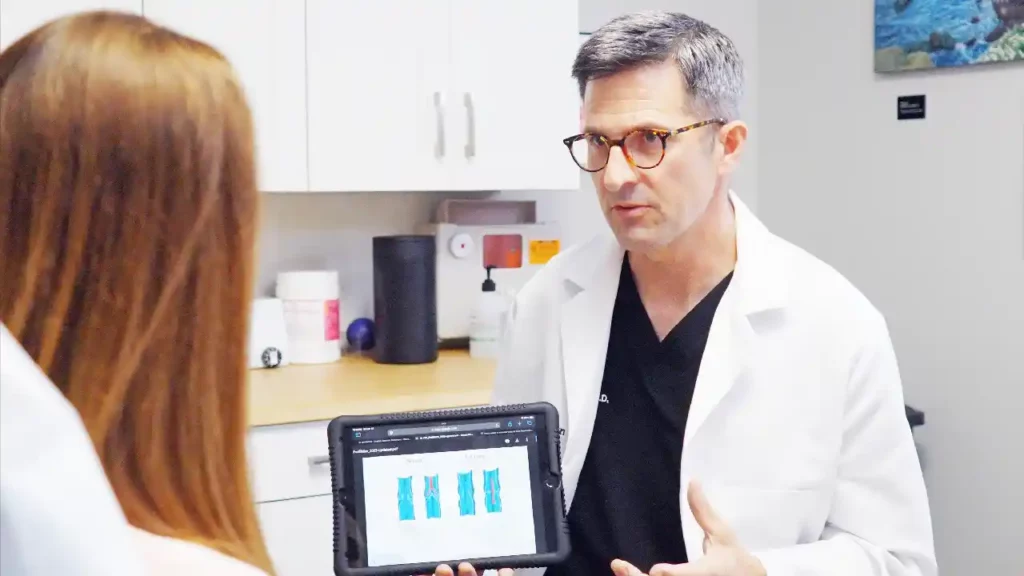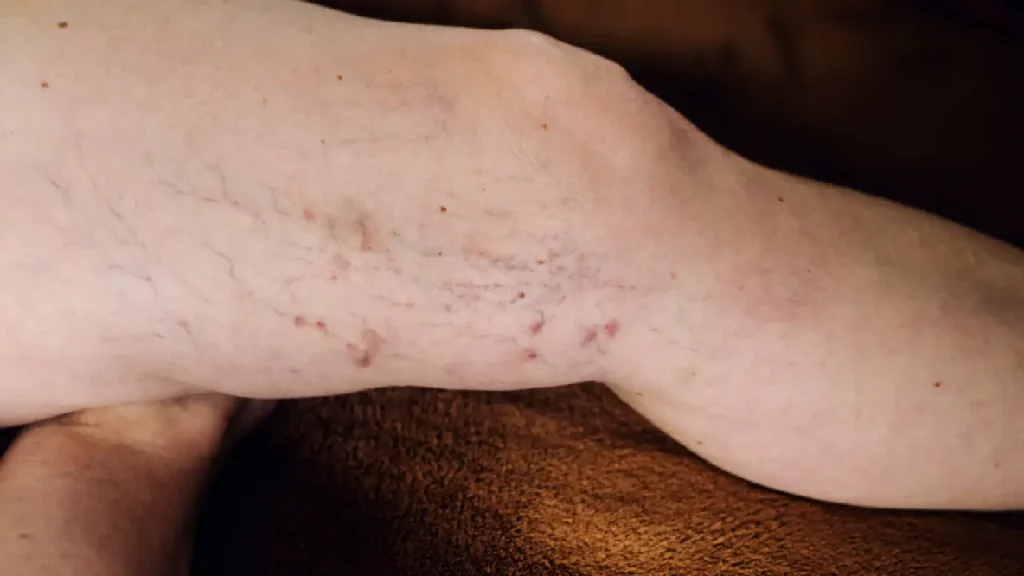If you’ve noticed those bulging, twisted veins on your legs, you might be tempted to dismiss them as just a cosmetic concern. However, varicose veins are more than just an aesthetic issue; they can signify underlying health problems that should not be ignored. At Vein Doctor for Women, we want to emphasize the importance of early diagnosis and treatment for varicose veins. This article will explore the possible long-term complications of untreated varicose veins and chronic venous insufficiency and explain why it’s crucial not to wait until later to seek help.
What Are Varicose Veins?
Varicose veins occur when the valves in your veins become weak or damaged, causing blood to pool and the veins to enlarge. This can lead to visible, swollen, and twisted veins that bulge out of the skin’s surface, most commonly in the legs. They often look like a dense mass of twisted, tangled, knotted ropes bulging out of the skin. While genetic predisposition is the leading risk factor for varicose veins, other factors like prolonged sitting or standing, obesity, pregnancy, and aging can also contribute to their development.
The Risks of Leaving Varicose Veins Untreated
Chronic Venous Insufficiency (CVI)
Chronic venous insufficiency is a condition where the veins are unable to pump enough blood back to the heart. Healthy leg veins contain valves that act as one-way doors, allowing blood to flow toward the heart but not backward due to gravity. Chronic venous insufficiency occurs when these vein valves collapse or malfunction, allowing gravity to force blood to flow backward and accumulate in the leg veins. This can lead to varicose veins. CVI can cause significant discomfort and lead to more severe complications, including:
- Swelling (Edema): Blood pooling in the veins can cause your legs and ankles to swell, leading to a feeling of heaviness and discomfort.
- Skin Changes: The increased pressure and fluid buildup can cause changes in your skin, such as discoloration, thickening, and a condition known as stasis dermatitis.
- Ulcers: Chronic venous insufficiency can lead to the formation of venous leg ulcers, which are painful, open sores that can become infected if not treated properly.
- Bleeding: Varicose veins close to the surface of the skin can sometimes burst, causing bleeding that can be difficult to control.
Deep Vein Thrombosis (DVT)
Varicose veins can increase your risk of developing deep vein thrombosis, a serious condition where a blood clot forms in a deep vein, usually in the legs. DVT can be life-threatening if the clot travels to your lungs, causing a pulmonary embolism. Symptoms of DVT include severe leg pain, swelling, redness, and warmth in the affected area. Immediate medical attention is crucial.
Superficial Thrombophlebitis
Superficial thrombophlebitis is the inflammation and clotting of a vein near the surface of the skin. This condition can cause pain, redness, and swelling along the vein. While it is less dangerous than DVT, it can still lead to complications and should be treated promptly.
Lipodermatosclerosis
Lipodermatosclerosis is a condition characterized by the hardening and thickening of the skin and underlying tissues, often in the lower legs. It is caused by long-standing varicose veins and chronic venous insufficiency. Lipodermatosclerosis can make your legs feel tight and painful, and it increases the risk of developing leg ulcers, which can lead to infections.
Infection
The presence of ulcers and continuous skin breakdown can make your skin more susceptible to infections, such as cellulitis. This bacterial infection can cause redness, swelling, and pain, and it requires prompt medical treatment to prevent further complications.

The Importance of Early Diagnosis and Treatment
Preventing Complications
Early diagnosis and treatment of varicose veins can prevent unwanted complications. At Vein Doctor for Women, we use state-of-the-art diagnostic tools to assess the condition of your veins and determine the best course of action. By addressing varicose veins early, we can help you avoid the pain, discomfort, and potential dangers associated with untreated vein conditions.
Improving Quality of Life
Treating varicose veins can significantly improve your quality of life. Many of our patients report reduced pain, increased mobility, and a better overall sense of well-being after treatment. You don’t have to live with the discomfort and embarrassment of varicose veins. Our treatments can help you regain confidence and enjoy a more active lifestyle.
Minimally Invasive Treatment Options
Many patients avoid seeking vein treatment because they believe they’ll need surgery. But that’s not true. Thanks to recent advancements in vein care, most vein conditions can be treated using safe, in-office, minimally invasive vein treatments. These procedures are typically performed in our office and require little to no downtime, allowing you to return to your daily activities quickly.
We offer a range of minimally invasive treatments for varicose veins, including:
- Sclerotherapy: A solution is injected into the affected vein, causing it to collapse and eventually be absorbed by the body.
- Endovenous Laser Treatment (EVLT): A laser fiber is inserted into the vein, delivering energy that causes the vein to close and seal shut.
- Radiofrequency Ablation (RFA): Similar to EVLT, but using radiofrequency energy to heat and close the vein, allowing the accumulated blood to reroute to healthier veins.
- VenaSeal: A medical adhesive is used to seal the vein, eliminating the need for heat or sclerosants. The damaged vein eventually hardens into scar tissue and gets absorbed.
Don’t Wait: Consult a Vein Doctor Today
It’s essential to recognize the early signs and symptoms of varicose veins so you can seek treatment promptly. These may include:
- Aching or heavy legs
- Burning, throbbing, or muscle cramping
- Swelling in your lower legs
- Itching around one or more of your veins
- Skin discoloration around the affected veins
If you experience any of these symptoms, don’t wait until they worsen. Contact us at Vein Doctor for Women to schedule a consultation with one of our board-certified vein specialists.
At Vein Doctor for Women, we understand that each patient is unique. That’s why we offer personalized treatment plans tailored to your specific needs. During your consultation, we will conduct a thorough examination and discuss your medical history, lifestyle, and treatment goals. Based on this information, we will recommend the most effective lifestyle changes and minimally invasive spider vein and varicose vein treatments for you.
Lifestyle Changes to Improve Symptoms
Maintain a Healthy Weight
While consulting a vein doctor is the primary step in managing varicose veins, maintaining a healthy weight can also reduce the risk of developing varicose veins and alleviate symptoms. Excess weight puts additional pressure on your veins, making it harder for blood to flow back to your heart. Incorporating a balanced diet and regular exercise into your routine can help you lose weight and take pressure off your veins, thus supporting your overall vein health.
Stay Active
Prolonged periods of sitting or standing can worsen varicose vein symptoms. Aim to move around every 30 minutes to keep your blood flowing. Simple activities like stretching, leg lifts, or taking a short walk can make a significant difference. If your job requires long periods of sitting or standing, consider wearing compression stockings to help improve circulation.
Elevate Your Legs
Elevating your legs can help reduce the pressure on your veins and alleviate symptoms such as swelling and discomfort. Try to elevate your legs above the level of your heart for 15-20 minutes several times a day. This can improve blood flow and provide relief from varicose veins.
Avoid Tight Clothing
Tight clothing, especially around the waist, legs, and groin, can restrict blood flow and exacerbate varicose vein symptoms. Opt for loose, comfortable clothing that allows for proper circulation. Avoid high heels and opt for lower-heeled shoes, which can help tone your calf muscles and promote better blood flow in your legs.
Stay Hydrated
Proper hydration is essential for maintaining healthy blood flow. Drink plenty of water throughout the day to keep your body hydrated and support vein health. Limiting your intake of caffeine and alcohol, which can dehydrate your body, can also help manage varicose vein symptoms.
Practice Good Posture
Good posture can improve circulation and reduce the strain on your veins. When sitting, keep your feet flat on the floor and avoid crossing your legs. When standing, distribute your weight evenly on both feet. Practicing good posture can help prevent the development of new varicose veins and manage existing symptoms.
Take Action Today
Varicose veins are not just a cosmetic issue; they can lead to serious health complications if left untreated. At Vein Doctor for Women, we are committed to providing you with the highest level of care and helping you achieve optimal vein health. Don’t wait until later to address your varicose veins. Contact us today to schedule a consultation.
